1. Which assumption underlies the teacher’s use
of performance objectives?
A. Not every form of learning is observable.
B. Performance objectives assure the learrier of
learning.
C. Learning is defined as a change in the learner’s
observable performance.
D. The success of learner is based on teacher
performance.
2. In the parlance of test construction what does
TOS mean?
A. Table of Specifics
B. Table of Specifications
C. Table of Specific Test Items
D. Team of Specifications
3. A student passes a research report poorly
written but ornately presented in a folder to
make up for the poor quality of the book report
content. Which Filipino trait does this practice
prove? Emphasis on __________.
A. art over academics
B. substance overporma
C. art over science
D. pormaover substance
4. In a criterion-referenced testing, what must
you do to ensure that your test is fair?
A. Make all of the questions true or false.
B. Ask each student to contribute one question.
C. Make twenty questions but ask the students to
answer only ten of their choice.
D. Use the objectives for the units as guide in
your test construction.
5. Which does Noam Chomsky, assert about
language learning for children?
I. Young children learn and apply grammatical
rules and vocabulary as they are exposed to
them.
II. Begin formal teaching of grammatical rules to
children as early as possible.
III. Do not require initial formal language
teaching for children.
A. I and III
B. II only
C. I only
D. I and II
6. Which Filipino trait works against the shift in
teacher’s role from teacher as a fountain of
information to teacher as facilitator?
A. Authoritativeness
B. Authoritarianism
C. Hiya
D. Pakikisama
7. If a teacher plans a constructivist lesson, what
will he most likely do? Plan how he can
A. do evaluate his students’ work
B. do reciprocal teaching
C. lecture to his students
D. engage his students in convergent thinking
8. Who among the following needs less verbal
counseling but needs more concrete and
operational forms of assistance? The child who
__________.
A. has mental retardation
B. has attention-deficit disorder
C. has learning disability
D. has conduct disorder
9. How would you select the most fit in
government positions? Applying Confucius
teachings, which would be the answer?
A. By course accreditation of an accrediting body
B. By merit system and course accreditation
C. By merit system
D. By government examinations
10. Which types of play is most characteristic of a
four to six-year old child?
A. Solitary and onlooker plays
B. Associative and coooperative plays
C. Associative and onlooker plays
D. Cooperative and solitary plays
11. A teacher’s summary of a lesson serves the
following functions, EXCEPT
A. it links the parts of the lesson
B. lt brings together the information that has
been discussed
C. it makes provisions for full participation of
students.
D. it clinches the basic ideas or concepts of the
lesson.
12. All of the following describe the development
of children aged eleven to thirteen EXCEPT
__________.
A. they shift from impulsivity to adaptive ability
B. sex differences in IQ becomes more evident
C. they exhibit increase objectivity in thinking
D. they show abstract thinking and judgement
13. Teacher T taught a lesson denoting
ownership by means of possessives. He first
introduced the rule, then gave examples,
followed by class exercises, then back to the rule
before he moved into the second rule. Which
presenting technique did he use?
A. Combinatorial
B. Comparative
C. Part-whole
D. Sequence
14. “In the light of the facts presented, what is
most likely to happen when … ?” is a sample
thought question on
A. inferring
B. generalizing
C. synthesizing
D. justifying
15. Teacher E discussed how electricity flows
through wires and what generates the electric
charge. Then she gave the students wires, bulbs,
switches, and dry cells and told the class to
create a circuit that will increase the brightness
of each bulb. Which one best describes the
approach used?
A. It used a taxonomy of basic thinking skills
B. It was contructivist
C. It helped students understand scientific
methodolgy
D. It used cooperative learning
16. Teacher B uses the direct instruction
strategy. Which sequence of steps will she
follow?
I. Independent practice
II. Feedback and correctiveness
III. Guided student practice
IV. Presenting and structuring
V. Reviewing the previous day’s work
A. V-II-IV-III-I
B. III-II-IV-I-V
C. V-lV-III-II-I
D. I-V-II-III-IV
17. Which are direct measures of competence?
A. Personality tests
B. Performance tests
C. Paper-and-pencil tests
D. Standardized test
18. Under which program were students who
were not accommodated in public elementary
and secondary schools because of lack of
classroom, teachers, and instructional materials,
were enrolled in private schools in their
respective communities at the government’s
expense?
A. Government Assistance Program
B. Study Now-Pay Later
C. Educational Service Contract System
D. National Scholarship Program
19. Which activity should a teacher have more
for his students if he wants them to develop
logical-mathematical thinking?
A. Problem solving
B. Choral reading
C. Drama
D. Storytelling
20. An effective classroom manager uses lowprofile classroom control. Which is a low-profile
classroom technique?
A. Note to parents
B. After-school detention
C. Withdrawal of privileges
D. Raising the pitch of the voice
21. Your teacher is of the opinion that the world
and everything in it are ever changing and so
teaches you the skill to cope with change. What
is his governing philosophy?
A. Idealism
B. Existentalism
C. Experimentalism
D. Realism
22. To come closer to the truth we need togo
back to the things themselves.This is the advice
of the
A. behaviorists
B. phenomenologists
C. idealists
D. pragmatists
23. Test norms are established in order to have a
basis for __________.
A. establishing learning goals
B. interpreting test results
C. computing grades
D. identifying pupils’ difficulties
24. A stitch on time saves nine, so goes the
adage.. Applied to classroom management, this
means that we __________
A. may not occupy ourselves with disruptions
which are worth ignoring because they are
minor
B. must be reactive in our approach to discipline
C. have to Jesolve minor disruptions before they
are out of control
D. may apply 9 rules out of 10 consistently
25. Which criterion should guide a teacher in the
choice of instructional devices?
A. Attractiveness
B. Cost
C. Novelty
D. Appropriateness
26. Based on Piaget’s theory, what should a
teacher provide for children in the sensimotor
stage?
A. Games and other physical activities to develop
motor skill.
B. Learning activities that involve problems of
classification and ordering.
C. Activities for hypothesis formulation.
D. Stimulating environment with ample objects
to play with.
27. Who among the following puts more
emphasis on core requirements, longer school
day, longer academic year and more challenging
textbooks?
A. Perennialist
B. Essentialist
C. Progressivist
D. Existentialist
28. The search for related literature by accessing
several databases by the use of a telephone line
to connect a computer library with other
computers that have database is termed
__________.
A. compact disc search
B. manual search
C. on-line search
D. computer search
29. With synthesizing skills in mind, which has
the highest diagnostic value?
A. Essay test
B. Performance test
C. Completion test
D. Multiple choice test
30. Based on Piaget’s theory, what should a
teacher provide for children in the concrete
operational stage?
A. Activities for hypothesis formulation.
B. Learning activities that involve problems of
classification and ordering.
C. Games and other physical activities to develop
motor skills.
D. Stimulating environment with ample objects
to play with.
31. Read the following then answer the question:
TEACHER: IN WHAT WAYS OTHER THAN THE
PERIODIC TABLE MIGHT WE PREDICT THE
UNDISCOVERED ELEMENTS?
BOBBY: WE COULD GO TOTHE MOON AND SEE
IF THERE ARE SOME ELEMENTS THERE WE
DON’T HAVE.
BETTY: WE COULD DIG DOWN TO THE CENTER
OF THE EARTH AND SEE IF WE FIND ANY OF
THE MISSING ELEMENTS.
RICKY: WE COULD STUDY DEBRIS FROM THE
METEORITES IF WE CAN FIND ANY.
TEACHER: THOSE ARE ALL GOOD ANSWERS
BUT WHAT IF THOSE, EXCURSIONS TO THE
MOON, TO THE CENTER OF THE EARTH, OR TO
FIND METEORITES WERE TOO COSTLY AND
TIME CONSUMING? HOW MIGHT WE USE THE
ELEMENTS WE ALREADY HAVE HERE ON
EARTH TO FIND SOME NEW ONES?
Question: Which questioning strategy/ies
does/do the exchange of thoughts above
illustrate?
A. Funneling
B. Sowing and reaping
C. Nose-dive
D. Extending and lifting
32. Which is NOT a sound purpose for asking
questions?
A. To probe deeper after an answer is given.
B. To discipline a bully in class.
C. To remind students of a procedure.
D. To encourage self-reflection.
33. The main purpose of compulsory study of the
Constitution is to __________
A. develop students into responsible, thinking
citizens
B. acquaint students with the historical
development of the Philippine Constitution
C. make constitutional experts of the students
D. prepare students for law-making
34. A child who gets punished for stealing candy
may not steal again immediately. But this does
not mean that the child may not steal again.
Based on Thorndike’s theory on punishment and
learning, this shows that __________
A. punishment strengthens a response
B. punishment removes a response
C. punishment does not remove a response
D. punishment weakens a response
35. As a teacher, you are a reconstructionist.
Which among these will be your guiding
principle?
A. I must teach the child every knowledge, skill,
and value that he needs for a better future.
B. I must teach the child to develop his mental
powers to the full.
C. I must teach the child so he is assured of
heaven.
D. I must teach the child that we can never have
real knowledge of anything.
36. How can you exhibit expert power on the
first day of school?
A. By making them feel you know what you are
talking about.
B. By making them realize the importance of
good grades.
C. By reminding them your students your
authority over them again and again.
D. By giving your students a sense of belonging
and acceptance.
37. A sixth grade twelve-year old boy comes
from a dysfunctional family and has been abused
and neglected. He has been to two orphanages
and three different elementary schools. The
student can decode on the second grade level,
but he can comprehend orally material at the
fourth or fifth grade level. The most probable
cause/s of this student’s reading problem is/are
__________.
A. emotional factors
B. poor teaching
C. neurological factors
D. immaturity
38. Teacher Q does not want Teacher B to be
promoted and so writes an anonymous letter
against Teacher B accusing her of fabricated lies
Teacher Q mails this anonymous letter to the
Schools Division Superintendent. What should
Teacher Q do if she has to act professionally?
A. Submit a signed justifiable criticism against
Teacher B, if there is any.
B. Go straight to the Schools Division
Superintendent and gives criticism verbally.
C. Hire a group to distribute poison letters
against Teacher B for information dissemination.
D. Instigate student activists to read poison
letters over the microphone.
39. In self-directed learning, to what extent
should a teacher’s scaffolding be?
A. To a degree the student needs it.
B. None, to force the student to learn by himself.
C. To the minimum, to speed up development of
student’s sense of independence.
D. To the maximum, in order to extend to the
student all the help he needs.
40. If your Licensure Examination Test (LET)
items sample adequately the competencies listed
in the syllabi, it can be said that the LET
possesses __________ validity.
A. concurrent
B. construct
C. content
D. predictive
41. Which guideline must be observed in the use
of prompting to shape the correct performance
of your students?
A. Use the least intrusive prompt first.
B. Use all prompts available.
C. Use the most intrusive prompt first.
D. Refrain from using prompts.
42. It is not wise to laugh at a two-year old child
when he utters bad word because in his stage he
is learning to __________.
A. consider other’s views
B. distinguish sex differences
C. socialize
D. distinguish right from wrong
43. In a treatment for alcoholism, Ramil was
made to drink an alcoholic beverage and then
made to ingest a drug that produces nausea.
Eventually, he was nauseated at the sight and
smell of alcohol and stopped drinking
alcohoLWhich theory explains this?
A. Operant conditioning
B. Social Learning Theory
C. Associative Learning
D. Attribution Theory
44. Which is a true foundation of the social
order?
A. Obedient citizenry
B. The reciprocation of rights and duties
C. Strong political leadership
D. Equitable distribution of wealth
45. As a teacher, what do you do when you
engage yourself in major task analysis?
A. Test if learning reached higher level thinking
skills.
B. Breakdown a complex task into sub-skills.
C. Determine the level of thinking involved.
D. Revise lesson objectives.
46. In instructional planning it is necessary that
the parts of the plan from the first to the last
have __________.
A. clarity
B. symmetry
C. coherence
D. conciseness
47. In a study conducted, the pupils were asked
which nationality they preferred, if given a
choice. Majority of the pupils wanted to be
Americans. In this case, in which obligation
relative to the state, do schools seem to be
failing? In their obligation to __________.
A. respect for all duly constituted authorities
B. promote national pride
C. promote obedience to the laws of the state
D. instill allegiance to the Constitution
48. The best way for a guidance counselor to
begin to develop study skills and habits in
underachieving student would be to __________.
A. have these underachieving students observe
the study habits of excelling students
B. encourage students to talk about study habits
from their own experiences
C. have them view film strips about various study
approaches
D. give out a list of effective study approaches
49. What is most likely to happen to our
economy when export continuously surpasses
importis a thought question on __________.
A. creating
B. relating cause-and-effect
C. synthesizing
D. predicting
50. Direct instruction is for facts, rules, and
actions as indirect instruction is for __________,
__________, __________.
A. hypotheses, verified data and conclusions
B. concepts, patterns and abstractions
C. concepts, processes and generalizations
D. guesses, data and conclusions
51. Why should a teacher NOT use direct
instruction all the time?
A. It requires much time.
B. It requires use of many supplementary
materials.
C. It is generally effective only in the teaching of
concepts and abstractions.
D. It reduces students engagement in learning.
52. The principle of individual differences
requires teachers to __________.
A. give greater attention to gifted learners
B. provide for a variety of learning activities
C. treat all learners alike while in the classroom
D. prepare modules for slow learners in class
53. Which questioning practice promotes more
class interaction?
A. Asking the question before calling on a
student.
B. Focusing on divergent question
C. Focusing on convergent questions.
D. Asking rhetorical questions.
54. Teacher F wanted to teach the pupils the skill
to do cross stitching. Her check up quiz was a
written test on the steps of cross stitching. Which
characteristic of a good test does it lack?
A. Scorability
B. Reliability
C. Objectivity
D. Validity
55. The attention to the development of a deep
respect and affection for our rich cultural past is
an influence of __________.
A. Confucius
B. Hegel
C. Teilhard de Chardin
D. Dewey
56. How can you exhibit legitimate power on the
first day of school?
A. By making your students feel they are
accepted for who they are.
B. By informing them you are allowed to act in
loco parentis.
C. By making them realize the importance of
good grades.
D. By making them feel you have mastery of
subject matter.
57. Study this group of tests which was
administered with the following results, then
answer the question.
Subject Mean SD Ronnels’s Score
Math 56 10 43
Physics 41 9 31
English 80 16 109
In which subject(s) did Ronnel perform most
poorly in relation to the group’s performance?
A. English
B. English and Math
C. Math
D. Physics
58. Which holds true to standardized tests?
A. They are used for comparative purposes
B. They are administered differently
C. They are scored according to different
standards
D. They are used for assigning grades
59. Study this group of tests which was
administered with the following results, then
answer the question.
Subject Mean SD Ronnels’s Score
Math 56 10 43
Physics 41 9 31
English 80 16 109
In which subject(s) were the scores most
homogenous?
A. Math
B. English
C. Physics
D. Physics and Math
60. What can be said of Peter who obtained a
score of 75 in a Grammar objective test?
A. He answered 75 items in the test correctly.
B. He answered 75% of the test items correctly.
C. His rating is 75.
D. He performed better than 5% of his
classmates.
61. Quiz is to formative test while periodic is to
__________
A. criterion-reference test
B. summative test
C. norm-reference test
D. diagnostic test
62. Which applies when skewness is zero?
A. Mean is greater than the median
B. Median is greater than mean
C. Scores have three modes
D. Scores are normally distributed
63. Value clarification as a strategy in Values
Education classes is anchored on which
philosophy?
A. Existentialism
B. Christian philosophy
C. Idealism
D. Hedonism
64. Out of 3 distracters in a multiple choice test
item, namely B, C, and D, no pupil chose D as
answer. This implies that D is __________
A. an ineffective distracter
B. a vague distracter
C. an effective distracter
D. a plausible distracter
65. All men are pretty much alike. It is only by
custom that they are set apart, said one Oriental
philosopher. Where can this thought be most
inspiring?
A. In a multi-cultural group of learners
B. In multi-cultural and heterogeneous groups of
learners and indigenous peoples’ group
C. In a class composed of indigenous peoples
D. In heterogeneous class of learners
66. Which group of philosophers
maintainthattruth exists in an objective order
that is independent of the knower?
A. Idealists
B. Pragmatists
C. Existentialists
D. Realists
67. Each teacher is said to be a trustee of the
cultural and educational heritage of the nation
and is, under obligation to transmit to learners
such heritage. Which practice makes him fulfill
such obligation?
A. Use the latest instructional technology.
B. Observe continuing professional education.
C. Use interactive teaching strategies.
D. Study the life of Filipino heroes.
68. Teacher B engages her students with
information for thorough understanding for
meaning and for competent application. Which
principle governs Teacher B’s practice?
A. Contructivist
B. Gestalt
C. Behaviorist
D. Cognitivist
69. In which competency do my students find the
greatest difficulty? In the item with a difficulty
index of __________.
A. 0.1
B. 0.9
C. 0.5
D. 1.0
70. Rights and duties are correlative. This means
that __________.
A. rights and duties regulate the relationship of
men in society
B. rights and duties arise from natural law
C. each right carries with it one or several
corresponding duties
D. rights and duties ultimately come from God
71. Which describes norm-referenced grading?
A. The performance of the group
B. What constitutes a perfect score
C. The students’ past performance
D. An absolute standard
72. Teacher U teaches to his pupils that pleasure
is not the highest good. Teacher’s teaching is
against what philosophy?
A. Realism
B. Hedonism
C. Epicureanism
D. Empiricism
73. Standard deviation is to variability as mode
to __________.
A. level of difficulty
B. discrimination
C. correlation
D. central tendency
74. Which test has broad sampling of topics as
strength?
A. Objective test
B. Short answer test
C. Essay test
D. Problem type
75. I combined several subject areas in order to
focus on a single concept for inter-disciplinary
teaching. Which strategy/method did I use?
A. Problem-entered learning
B. Thematic instruction
C. Reading-writing activity
D. Unit method
76. Which teaching activity is founded on
Bandura’s Social Learning Theory?
A. Lecturing
B. Modeling
C. Questioning
D. Inductive Reasoning
77. For which may you use the direct instruction
method?
A. Become aware of the pollutants around us.
B. Appreciate Milton’s Paradise Lost.
C. Use a microscope properly.
78. We encounter people whose prayer goes like
this: “O God, if there is a God; save my soul, if I
have a soul” From whom is this prayer?
A. Stoic
B. Empiricist
C. Agnostic
D. Skeptic
79. What measure of central tendency does the
number 16 represent in the following data: 14,
15, 17, 16, 19, 20, 16, 14, 16?
A. Mode
B. Median
C. Mode and median
D. Mean
80. Availment of the Philippine Education
Placement Test (PEPT) for adults and out-ofschool youths is in support of the goverriment’S
educational program towards __________.
A. equitable access
B. quality
C. quality and relevance
D. relevance
81. Which one can best evaluate students’
attitudinal development?
A. Essay test
B. Portfolio
C. Observation
D. Short answer test
82. Which is a form of direct instruction?
A. Discovery process
B. Problem solving
C. Programmed instruction
D. Inductive reasoning
83. History books used in schools are replete
with events portraying defeats and weaknesses
of the Filipino as a people. How should you
tackle them in the classroom?
A. Present them and express your feelings of
shame.
B. Present facts and use them as means in
inspiring your class to learn from them.
C. Present them and blame those people
responsible or those who have contributed.
D. Present them as they are presented,and tell
the class to accept reality.
84. Standard deviation is to variability as mean is
to __________.
A. coefficient of correlation
B. central tendency
C. discrimination index
D. level of difficulty
85. A mother gives his boy his favorite snack
everytime the boy cleans up his room.
Afterwards, the boy cleaned his room everyday
in anticipation of the snack. Which theory is
illustrated?
A. Associative Learning
B. Classical Conditioning
C. Operant Conditioning
D. Pavlonian Conditioning
86. Bruner’s theory on intellectual development
moves from enactive to iconic and symbolic
stages. In which stage(s) are diagrams helpful to
accompany verbal information?
A. Enactive and iconic
B. Symbolic
C. Symbolic and enactive
D. Iconic
87. Teacher A discovered that his pupils are very
good in dramatizing. Which tool must have
helped him discover his pupils’ strength?
A. Portfolio assessment
B. Performance test
C. Journal entry
D. Paper-and-pencil test
88. Which one can enhance the comparability of
grades?
A. Using common conversion table for
translating test scores in to ratings
B. Formulating tests that vary from one teacher
to another
C. Allowing individual teachers to determine
factors for rating
D. Individual teachers giving weights to factors
considered for rating
89. In the Preamble of the Code of Ethics of
Professional Teachers, which is NOT said of
teachers?
A. LET passers
B. Duly licensed professionals
C. Possess dignity and reputation
D. With high-moral values as well as technical
and professional competence
90. Which is the first step in planning an
achievement test?
A. Define the instructional objective.
B. Decide on the length of the test.
C. Select the type of test items to use.
D. Build a table of specification.
91. A teacher who equates authority with power
does NOT __________.
A. shame
B. develop self-respect in every pupil
C. retaliate
D. intimidate
92. Which is a major advantage of a curriculumbased assessment?
A. It is informal in nature.
B. It connects testing with teaching.
C. It tends to focus on anecdotal information on
student progress.
D. It is based on a normreferenced measurement model.
93. Which does NOT belong to the group of
alternative learning systems?
A. Multi-grade grouping
B. Multi-age grouping
C. Graded education
D. Non-graded grouping
94. Theft of school equipment like tv, computer,
etc. by teenagers in the community itself is
becoming a common phenomenon. What does
this incident signify?
A. Prevalence of poverty in the community.
B. Inability of school to hire security guards.
C. Deprivation of Filipino schools.
D. Community’s lack of sense of co-ownership.
95. Which can effectively measure students’
awareness of values?
A. Projective techniques
B. Moral dilemma
C. Likert scales
D. Anecdotal record
96. Based on Edgar Dale’s Cone of Experience,
which activity is closest to the real thing?
A. View images
B. Attend exhibit
C. Watch a demo
D. Hear
97. Teacher B is a teacher of English as a Second
Language. She uses vocabulary cards, fill-in-theblank sentences, dictation and writing exercises
in teaching a lesson about grocery shopping.
Based on this information, which of the following
is a valid conclusion?
A. The teacher is reinforcing learning by giving
the same information in, a variety of methods.
B. The teacher is applying Bloom’s hierachy of
cognitive learning.
C. The teacher wants to do less talk.
D. The teacher is emphasizing listening and
speaking skills.
98. Helping in the development of graduates who
aremaka-Diyosis an influence of
A. naturalistic morality
B. classical Christian morality
C. situational morality
D. dialectical morality
99. From whom do we owe the theory of
deductive interference as illustrated in
syllogisms?
A. Plato
B. Scorates
C. Aristotle
D. Pythagoras
100. Studies in the areas of neurosciences
disclosed that the human brain has limitless
capacity. What does this imply?
A. Some pupils are admittedly not capable of
learning.
B. Every pupil has his own native ability and his
learning is limited to this nativeabilty.
C. Every child is a potential genius.
D. Pupils can possibly reach a point where they
have learned everything.
Part 2 LET Reviewer Professional Education
Answer Keys
1. C
2. B
3. D
4. D
5. D
6. C
7. D
8. B
9. C
10. B
11. B
12. A
13. C
14. A
15. C
16. C
17. D
18. D
19. A
20. D
21. B
22. B
23. B
24. C
25. D
26. A
27. B
28. C
29. B
30. B
31. D
32. B
33. A
34. C
35. A
36. A
37. C
38. A
39. C
40. C
41. A
42. A
43. C
44. B
45. B
46. B
47. B
48. B
49. B
50. C
51. C
52. B
53. B
54. A
55. A
56. D
57. A
58. C
59. D
60. D
61. B
62. D
63. C
64. A
65. B
66. D
67. D
68. D
69. A
70. C
71. A
72. B
73. C
74. C
75. D
76. D
77. C
78. C
79. C
80. A
81. B
82. C
83. B
84. B
85. D
86. B
87. B
88. A
89. A
90. D
91. B
92. D
93. C
94. D
95. D
96. B
97. A
98. B
99. A
100. C
LET Reviewer Professional Education Part 1 With Answer Key
LET Reviewer Professional Education Part 3 With Answer Key
LET Reviewer Professional Education Part 4 With Answer Key
LET Reviewer Professional Education Part 5 With Answer Key
LET Reviewer Professional Education Part 6 With Answer Key

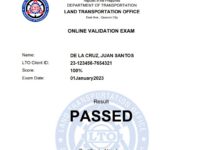
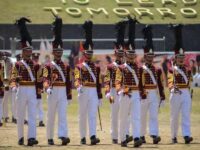
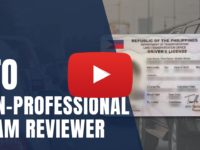
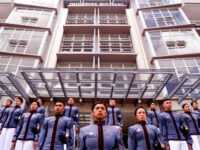

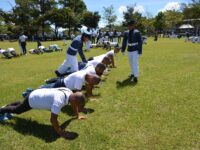
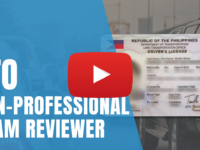
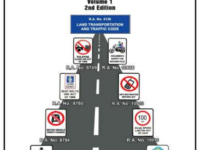
0 Comments